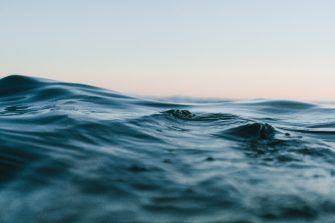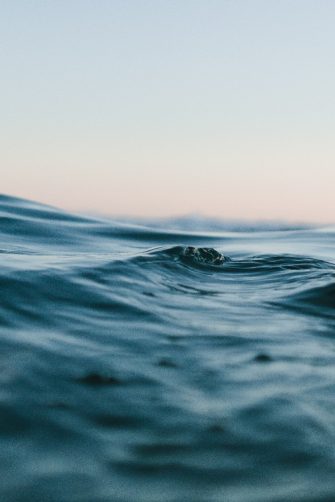A team of scientists from UNSW analysed the mysterious unknown debris that washed up on Sydney beaches this week.
Coogee Beach, one of the famously sunny beaches on Sydney’s coast, was closed this week after lifeguards discovered dark, ball-shaped debris.
Hundreds of the sticky blobs have washed up on shore throughout the week, including at Gordon’s Bay and Maroubra beach, with further beach closures, opens in a new window announced today.
Randwick City Council said, opens in a new window preliminary test results “show the material is a hydrocarbon-based pollutant which is consistent with the makeup of tar balls”.
“Australia’s beaches, including recently along Sydney’s coastline, have seen the arrival of tar balls – dark, spherical, sticky blobs formed from weathered oil,” says Professor Alex Donald, from the School of Chemistry, opens in a new window at UNSW Sydney who, alongside a team of researchers, carried out an array of preliminary analyses of the debris. The ‘weathering’ process refers to the changes that occur to oil as it spends time in the environment.
This phenomenon isn’t new. Globally, tar balls have been appearing on shores for decades. On Californian beaches, tar balls form because of natural oil seeping from the seafloor. The 2010 Deepwater Horizon spill in the Gulf of Mexico left massive tar ball deposits along coastlines.
“In Australia, Golden Beach in Queensland and Ninety Mile Beach in Gippsland have seen similar incidents, often after oil spills or shipping discharges,” says Prof. Donald. “These sticky blobs typically point to larger environmental issues, whether caused by human activity or natural oil seepage.”

How do tar balls form?
The discovery of tar balls at Coogee Beach is the latest in a series of similar incidents. As Prof. Donald explains, the key challenge is determining whether the tar balls originate from human activity like shipping spills, or natural oil seeps from the ocean floor.
“This distinction is important because a natural seep requires different environmental responses compared to an industrial oil spill, which calls for immediate cleanup and potential legal action,” says Prof. Donald.
Tar balls form due to supramolecular chemistry – chemistry of interactions between small molecules that self-assemble into larger, more complex entities – and are driven by intermolecular forces – attractive and repulsive forces that arise between the molecules of a substance.
In the case of tar balls, when oil enters the ocean, weathering processes cause the lighter components to evaporate, leaving behind heavier compounds. The relative amounts of maltenes – the lighter, fluid fractions – and asphaltenes – the heavier, solid fractions – play a key role in the formation of tar balls.
Asphaltenes, which don’t break down in water, aggregate and cluster together through an interaction known as van der Waals forces, which in turn leads to the sticky, cohesive blobs that eventually wash ashore.
Crude oil is composed of both maltenes and asphaltenes, Prof. Donald explains, but in natural oil seeps, the slow weathering process often results in a higher concentration of asphaltenes.
“This means that in the occurrence of an oil spill, some maltenes can remain,” says Prof. Donald. “The balance of these components can help scientists trace the origin of tar balls, though it’s not always a definitive measure. But in this case, the samples contained mostly maltenes consistent with an oil spill.”
What have the tests revealed?
A team at UNSW Chemistry, working alongside the Mark Wainright Analytical Centre at UNSW, opens in a new window, conducted a preliminary analysis of the tar balls from Coogee Beach, with approval from Randwick City Council, who provided the samples.
The team carried out a process known as Nuclear Magnetic Resonance (NMR) testing, which is like magnetic resonance imaging (MRI), to reveal the structure, identity, concentration, and behaviour of molecules in solid or liquid samples.
“The NMR and other results indicated that the tar balls contained bituminous materials, primarily maltenes and asphaltenes, as well as some biological materials such as fatty acids,” says Prof. Donald. “While these findings confirm that the tar balls originated from weathered oil, it is still unclear whether they resulted from natural seepage or a crude oil spill. Further chemical analysis, is needed to pinpoint the source.”
Further analysis, using Ultraviolet A radiation (UVA) revealed potential clues on the mystery origin of the tar balls.

“Several parts of a cross section inside a tar ball were fluorescent under UVA. If the inside of a tar ball is fluorescent, it indicates the presence of organic compounds that absorb and re-emit light, commonly aromatic hydrocarbons such as polycyclic aromatic hydrocarbons (PAHs),” says Associate Professor Vinh Nguyen, also from the School of Chemistry.
This fluorescence from the tar balls collected from Coogee beach suggests that they likely originated from petroleum-based sources as these materials naturally contain PAHs.
“The source could be linked to oil spills, petrochemical processes, or environmental pollution involving hydrocarbons. Fluorescence also provides insights into the aging and chemical transformation of the tar ball,” says Prof. Nguyen. “Additionally, fluorescence can hint at a biological contribution, as some organic materials, like marine algae, also fluoresce under UV light.”
Why this matters for Australia
Tar balls aren’t just a cosmetic problem for beaches. The sticky material can cause harm to marine ecosystems and impact animals such as seabirds, turtles, and fish by affecting their movement and feeding.
“Additionally, the toxic compounds in tar balls can leach into the water, posing long-term threats to marine biodiversity,” says Prof. Donald.
“For Australia, which relies heavily on coastal tourism and fisheries, tar balls present both environmental and economic risks.
"The appearance of tar balls on beaches like Coogee not only damages Australia’s pristine coastal reputation but also threatens the health of ecosystems that support industries like fishing and tourism.”
For now, Coogee beach, Clovelly beach, Gordon’s Bay and the northern end of Maroubra beach remain closed and investigations into the tar balls continue.
“Whether caused by human activity or natural processes, solving the mystery of these sticky invaders requires ongoing scientific inquiry,” says Prof. Donald. “Protecting Australia’s iconic beaches and marine ecosystems remains a critical environmental priority.”
These tests were carried out by a team led by A/Prof Jonathon Beves, Professor Timothy Schmidt, Dr Christopher Hansen, Dr Martina Lessio and A/Prof Vinh Nguyen of the School of Chemistry and Dr Aditya Rawal from the UNSW Mark Wainwright Analytical Centre, who are continuing their analysis and thank Randwick City Council for providing the samples.









